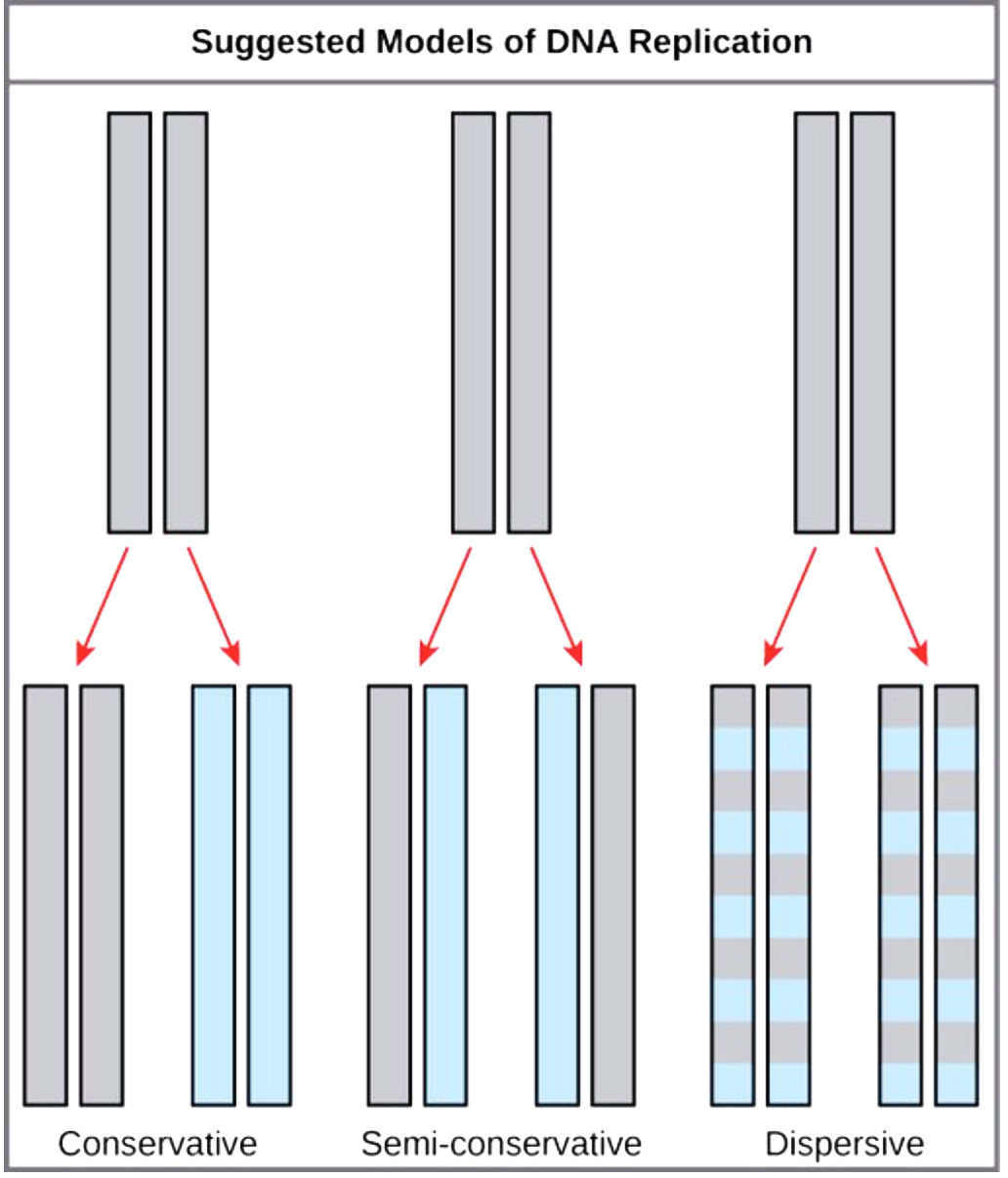
Why is DNA replication said to be semi-conservative?
Answer
575.4k+ views
Hint: DNA replication depends on the complementary base pairing. The Meselson- Stahl experiment confirmed the theory that DNA replication is semi- conservative.
Complete step by step answer:
DNA replication is semi-conservative because in the replication process the resulting DNA helix is composed of both a new strand and an old strand. This occurs because of the complementary base pairing, I.e. each nitrogenous base only pairs with its complementary pair. These two strands are identical to the initial double helix. Each strand becomes a template for the synthesis of a new strand.
- DNA replication is the process of duplication of DNA.
- DNA replication to be semi- conservative is confirmed by the Meselson- Stahl experiment in 1958.
- In the semiconservative model of DNA, each strand of DNA serves as a template for the making of a new complementary strand, resulting in two DNA molecules with one old and one new strand.
- Even though three different models of DNA replication were proposed, the semi- conservative one was most popular among scientists of that time. The other two models were named as conservative and dispersive.

- Meselson and Stahl carried out their experiment of DNA replication in E. coli bacteria for many generations.
- Analyzation of DNA from the first four- generation of E. coli confirmed that DNA replication is closest to the semi- conservative model, rather than the other two.
- Though the experiment was conducted on E. coli, the theory of DNA replication being semi- conservative is true universally.
Note: In the semi-conservative process of DNA replication, the resultant DNA helix is composed of both a new and an old strand, and both are identical to the initial helix. The reason for the semiconductive nature of DNA replication is that the nitrogenous bases can only pair with its complementary partner I.e. adenine pair with thymine and cytosine pairs with guanine.
Complete step by step answer:
DNA replication is semi-conservative because in the replication process the resulting DNA helix is composed of both a new strand and an old strand. This occurs because of the complementary base pairing, I.e. each nitrogenous base only pairs with its complementary pair. These two strands are identical to the initial double helix. Each strand becomes a template for the synthesis of a new strand.
- DNA replication is the process of duplication of DNA.
- DNA replication to be semi- conservative is confirmed by the Meselson- Stahl experiment in 1958.
- In the semiconservative model of DNA, each strand of DNA serves as a template for the making of a new complementary strand, resulting in two DNA molecules with one old and one new strand.
- Even though three different models of DNA replication were proposed, the semi- conservative one was most popular among scientists of that time. The other two models were named as conservative and dispersive.

- Meselson and Stahl carried out their experiment of DNA replication in E. coli bacteria for many generations.
- Analyzation of DNA from the first four- generation of E. coli confirmed that DNA replication is closest to the semi- conservative model, rather than the other two.
- Though the experiment was conducted on E. coli, the theory of DNA replication being semi- conservative is true universally.
Note: In the semi-conservative process of DNA replication, the resultant DNA helix is composed of both a new and an old strand, and both are identical to the initial helix. The reason for the semiconductive nature of DNA replication is that the nitrogenous bases can only pair with its complementary partner I.e. adenine pair with thymine and cytosine pairs with guanine.
Recently Updated Pages
The number of solutions in x in 02pi for which sqrt class 12 maths CBSE

Write any two methods of preparation of phenol Give class 12 chemistry CBSE

Differentiate between action potential and resting class 12 biology CBSE

Two plane mirrors arranged at right angles to each class 12 physics CBSE

Which of the following molecules is are chiral A I class 12 chemistry CBSE

Name different types of neurons and give one function class 12 biology CBSE

Trending doubts
Which are the Top 10 Largest Countries of the World?

What are the major means of transport Explain each class 12 social science CBSE

Draw a labelled sketch of the human eye class 12 physics CBSE

Differentiate between insitu conservation and exsitu class 12 biology CBSE

The computer jargonwwww stands for Aworld wide web class 12 physics CBSE

State the principle of an ac generator and explain class 12 physics CBSE




